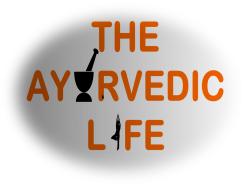Onion Pakoras (Fritters)
The humble onion pakora is as popular as it is easy to make. It can be served as a tea-time snack or even as an appetizer for a dinner or lunch party. Finely sliced onions, coated with chickpea batter infused with carom seeds, asafetida and chilli flakes, onion pakoras make for a very tasty treat.
Ingredients (serves 4):
- Onions (2 medium sized ones – red, white or yellow) (finely sliced lengthwise, not chopped)
- Besan (chickpea flour) – 1 cup
- Rice flour – 2 tbsp
- Salt (to taste)
- Chilli powder (3/4th tsp) (add more or less depending on your spice tolerance)
- Hing (asafetida) powder (1/2 tsp)
- Ajwain (carom) seeds (3/4th tsp)
- Water (to make a paste)
- Oil (for deep frying)
Method:
- Mix besan, rice flour, salt, chilli powder, hing, ajwain, water. The paste has to be made of a flowing consistency, like dosa batter. If it is too thick, the pakoras will have a thick covering and won’t be very tasty. But if the paste is too watery, the pakoras will end up with too thin of a covering and the onions will dominate the taste.
- Heat oil in a thick bottomed vessel on medium flame. To test if the oil is hot enough, take a drop of the batter and put it in the oil. If it sinks and doesn’t come up immediately, then the oil is not yet ready. If the drop of batter gets browned almost instantly and you see fumes rising from the oil, you know it is too hot. If the drop of batter floats and changes color gradually, the oil is at the right temperature.
- When the oils is at the right temperature, put the onions into the paste little by little, coat with batter and drop into the oil carefully from the side of the vessel. Don’t drop the onions directly into the center of the heated oil, it may spurt. Gently slide it in from the side of the vessel. You can make as many pakoras simultaneously as the vessel size permits.
- Flip it over after half a minute or so. When the pakora reaches a golden brown color, you can take it out from the oil using a ladle with holes preferably, so that any excess oil will fall back into the vessel.
- Transfer to a vessel that is lined with some kitchen towels so that any excess oil in the pakora gets absorbed.
- Serve hot with a chutney of your choice. Ketchup/sauce also works. You can even have it as is.
Sweet (flours), sour (to counter the lack of sour taste, you can sprinkle some chaat masala or amchur powder in the end before serving the pakoras), salty (salt), pungent (chilli powder), bitter (ajwain), astringent (asafetida).
Anything deep fried is definitely kapha and pitta aggravating. The heavy, oily nature of fritters make them a food that is opposite in nature to vata’s light, dry qualities, so can be enjoyed by vatas. But they have to be careful to not overdo it and eat in moderation since this is definitely a difficult to digest food and may put a load on their already weak digestive systems. The hing and ajwain (carom seeds) enhance the digestibility of the pakoras. This doesn’t mean that pittas and kaphas should completely avoid pakoras. But they should be mindful of the effects this can have on their respective doshas. Oily, heavy foods have similar qualities as kapha and are hence not advisable in excess for them since that may lead to lethargy and weight gain. The sharpness and oiliness of pakoras aggravate similar pitta qualities in pitta individuals and may lead to increased irritability, heat and skin disturbances in such people. Moderation is the key.
This may be an okay dish to consume in small quantities during vata season i.e. late fall and early winter.
Effects on the Mind (Gunas – Qualities):
This is definitely a slightly rajasic dish and depending on amount and frequency of consumption, can easily turn into a tamasic one as well. In small quantities, consumption should be ok. The sattvik nature of pakoras can be enhanced by minimizing the amount of salt, chilli powder and spices to make it mild and not stimulating in taste. Also, the amount of consumption will dictate the after effects on the mind – take in small quantities to prevent tamasic effects.
Oily, hot, heavy, sharp.
This dish is overall heating due to the heating ingredients like oil, salt and chilli powder.

